On View
See Inside the First Museum Retrospective Dedicated to John Waters’s Unparalleled Contributions to Cinema—and Bad Taste
"Pope of Trash" at the Academy Museum documents the director's films, obsessions, and creative processes.

"Pope of Trash" at the Academy Museum documents the director's films, obsessions, and creative processes.

Min Chen

In mid-September, at the unveiling of his much-deserved star on the Hollywood Walk of Fame in Los Angeles, filmmaker John Waters declared, “God, here I am, closer to the gutter than ever.” It’s a quip befitting of the once-anointed Pope of Trash, but only somewhat true. The Baltimore icon may have spent the greater part of his career producing films that erred on the side of shock value and bad taste, but the latter-day embrace of his filmography has seen him inch ever closer to the stars.
In fact, not far from the Walk of Fame, the first major retrospective on Waters’s transgressive oeuvre has recently opened at the Academy Museum of Motion Pictures (on view until August 4, 2024). Titled “Pope of Trash,” the show traces the creative processes, style, and themes that have fueled the director’s films and six-decade career.
“It’s been interesting to look at his trajectory of going from an outsider to an insider,” the show’s co-curator Dara Jaffe told Artnet News. “Part of his longevity is the fact that every subject matter he ever approached, even though he’s lovingly poking fun, it’s never with mean spirit. His movies are radically inclusive, and he did have a very original point of view that went beyond just shock.”
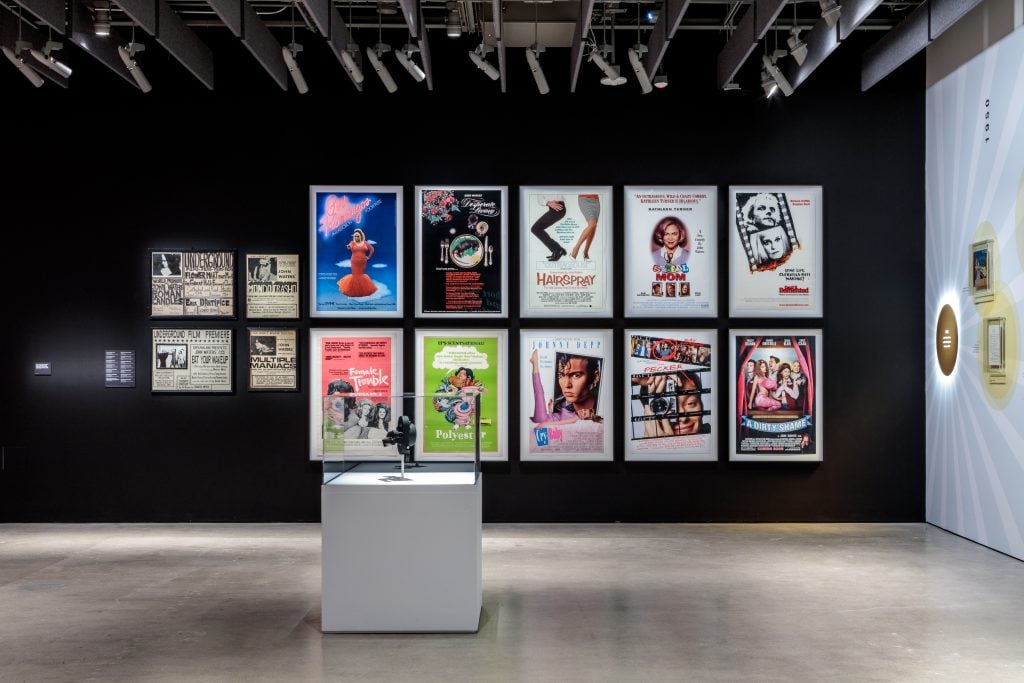
Installation view of “John Waters: Pope of Trash” at The Academy Museum of Motion Pictures, Los Angeles, California. Photo: Charles White, JWPictures/©Academy Museum Foundation.
In the 1960s, Waters began a run of independent films populated by despicable characters, absurd dialogue, and even more obscene scenarios not limited to the scatological. While derided on release, Waters’s films such as Multiple Maniacs (1970) and Desperate Living (1977) have increasingly been celebrated for their unparalleled audacity and queerness, leading to his studio outings including Hairspray (1988) and Cry-Baby (1990).
On view at “Pope of Trash” are some 400 objects—including handwritten scripts, costumes, props, set designs, posters, photographs, and clips—that document the making of Waters’s classic works. Fans might recognize the recreated trailer from Pink Flamingos (1972) or the purple tutu worn by Jean Hill in Desperate Living. Waters’s scripts and expense ledgers, too, offer a peek into the daily realities of independent moviemaking.
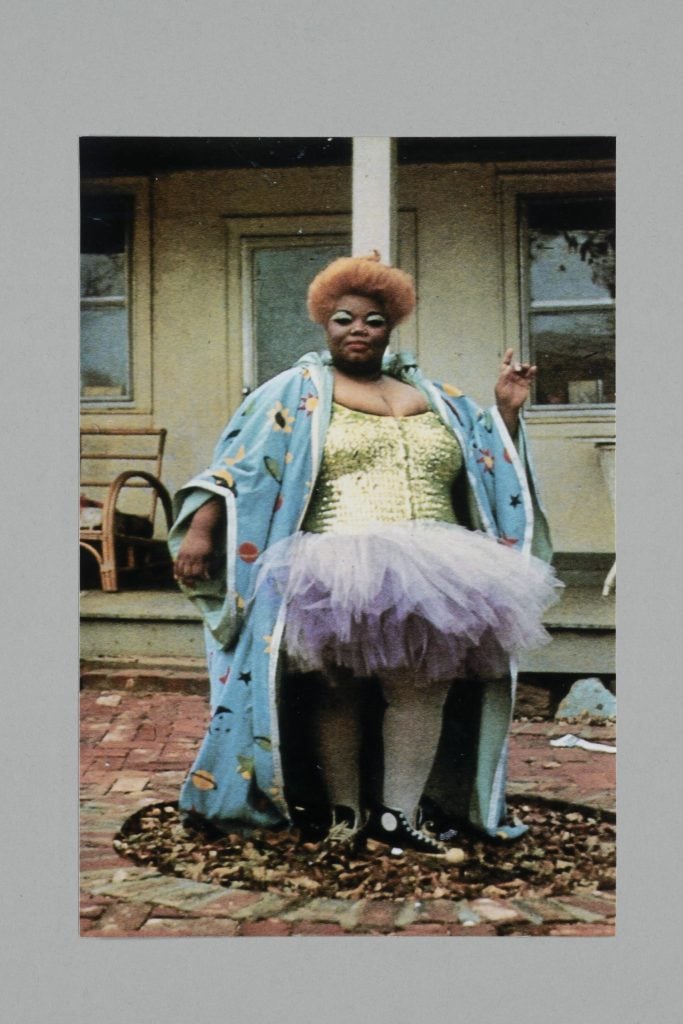
Jean Hill as Grizelda Brown, Desperate Living (1977). Photo: Bob Adams, Courtesy Bob Adams.
To bring these objects together, the show’s curators, Jaffe and Jenny He, leaned on the Waters archive at Wesleyan University, which the director continues to build. But the organizers also scoured personal collections—”literally from the attics to the basements,” per Jaffe—particularly those of Waters and his regular collaborators, collectively known as the Dreamlanders, including actors Mink Stole and Divine, production designer Vincent Peranio, and costume designer Van Smith.
“John himself was an amazing wealth of knowledge in terms of helping us find the objects in the exhibition,” said He. “Not only was he connecting us to people to talk about the history of his movies, but also finding out where and how we can do our detective work.”

Installation view of “John Waters: Pope of Trash” at The Academy Museum of Motion Pictures, Los Angeles, California. Photo: Charles White, JWPictures/©Academy Museum Foundation.
The exhibition also delves into Waters’s particular obsessions and inclinations. Curator He pointed out the recreated church environment that first greets visitors was made in reference to the director’s past penchant for debuting his films in Baltimore churches (Waters was raised Catholic). Jaffe noted that Waters’s massive collection of newspaper clippings, highlights not just what tickled his interest, but his avid newspaper-reading.
Due space is given over to how Waters’s legend has grown up around him. International film posters (as well as a photo of Divine and Tab Hunter promoting Polyester at the Cannes Film Festival in 1981) showcase his global footprint; a montage of his many cameo appearances in TV and film (what Waters calls “fame maintenance”) capture his status as icon; while fan art included at the close of the exhibition is testament to his singular appeal.
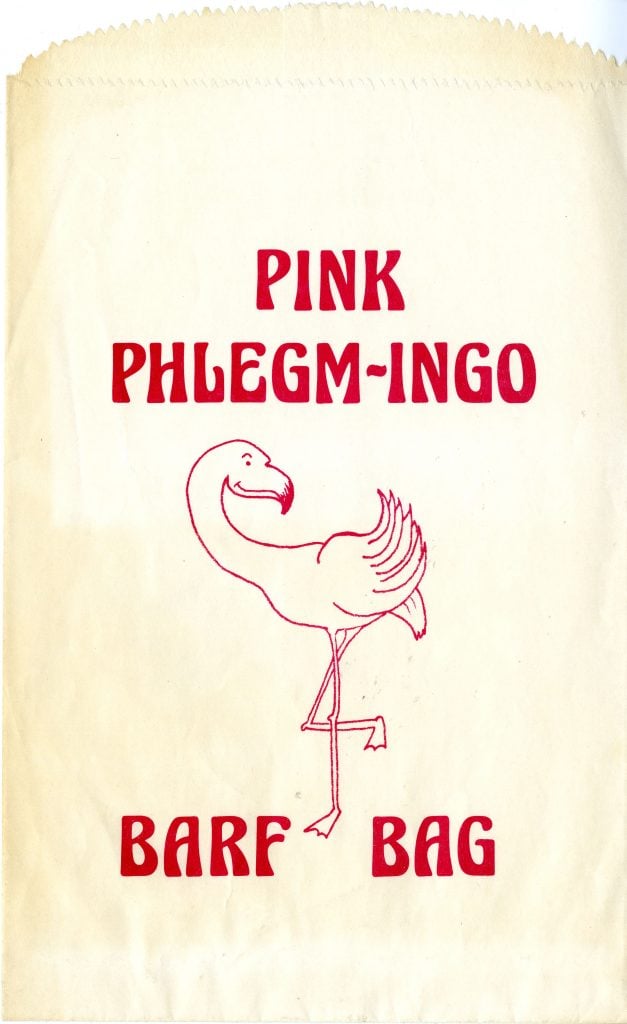
Pink Phlem-ingo bag for Pink Flamingos (1972). Photo courtesy of Ogden and Mary Louise Reid Cinema Archives, Wesleyan University.
Waters has relished the opportunity to revisit his career alongside his friends and collaborators, remarking to He and Jaffe that the exhibition was akin to an episode of the TV series This Is Your Life. He even instructed the curators to send examples of the “Pope of Trash” merchandise to Wesleyan so they may be collected.
“He told us that when he and his friends first started making movies, the people of Baltimore would steer clear of them—they’re the town pariahs. Now, you go to Baltimore and there are pink flamingos everywhere in dedication to him, and he’s the town hero,” Jaffe said. “I think it’s a testament to the heart that he put into his movies all along. He was way ahead of his time and everyone else is now catching up.”
“John Waters: Pope of Trash” is on view at the Academy Museum of Motion Pictures, 6067 Wilshire Boulevard, Los Angeles, through August 4, 2024. See more images from the show below.

Installation view of “John Waters: Pope of Trash” at The Academy Museum of Motion Pictures, Los Angeles, California. Photo: Charles White, JWPictures/©Academy Museum Foundation.
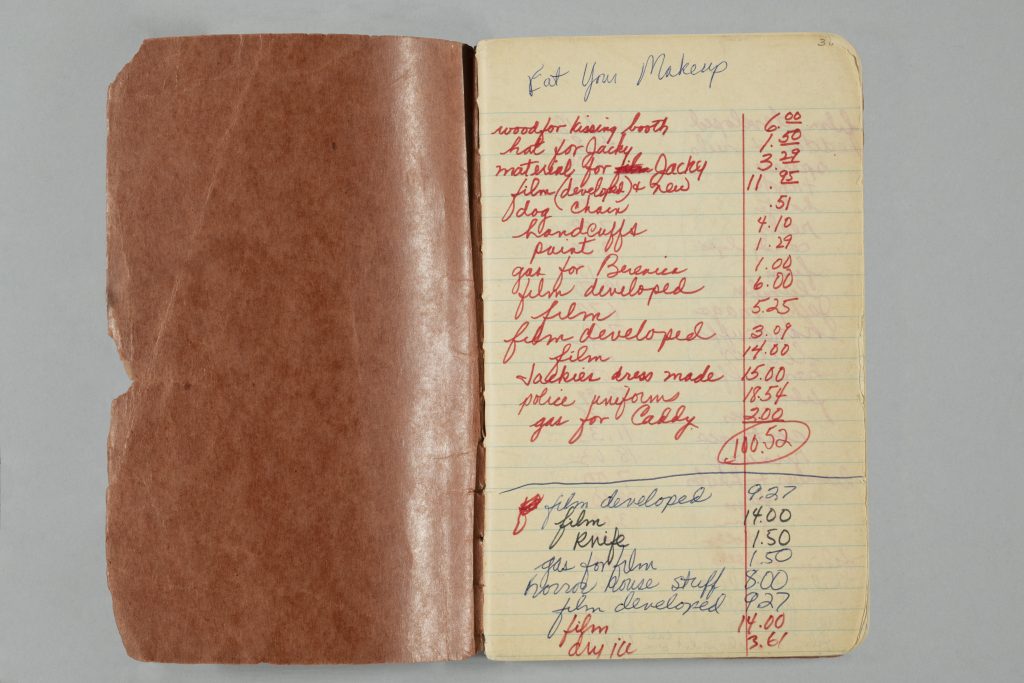
Expense ledger, Eat Your Makeup (1968). Photo: Owen Kolasinski/© Academy Museum Foundation, Courtesy of Ogden and Mary Louise Reid Cinema Archives, Wesleyan University.
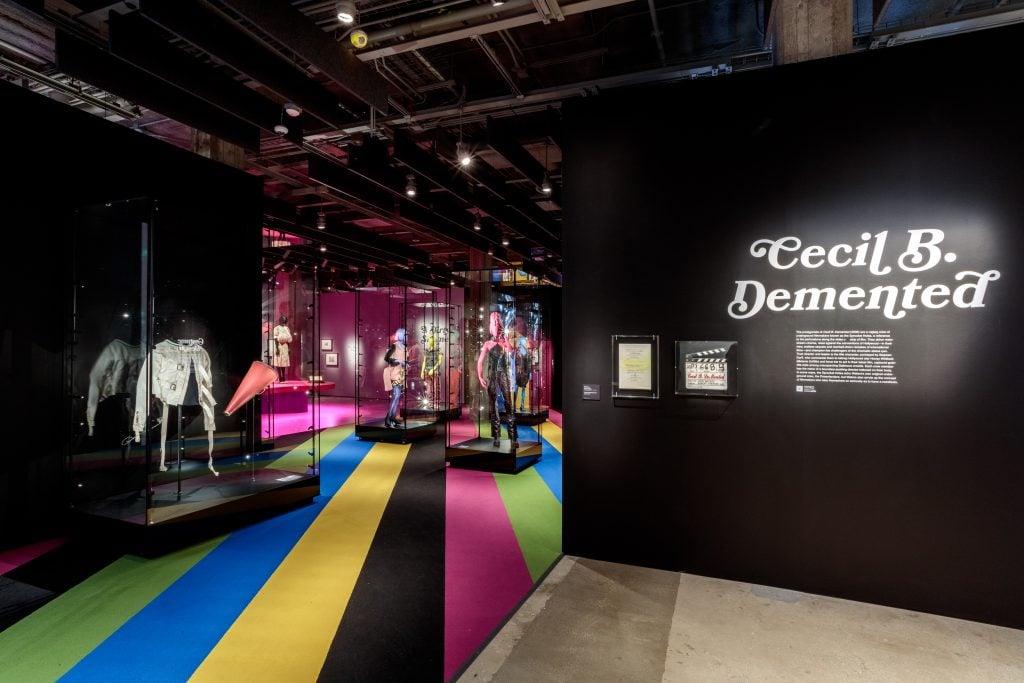
Installation view of “John Waters: Pope of Trash” at The Academy Museum of Motion Pictures, Los Angeles, California. Photo: Charles White, JWPictures/©Academy Museum Foundation.
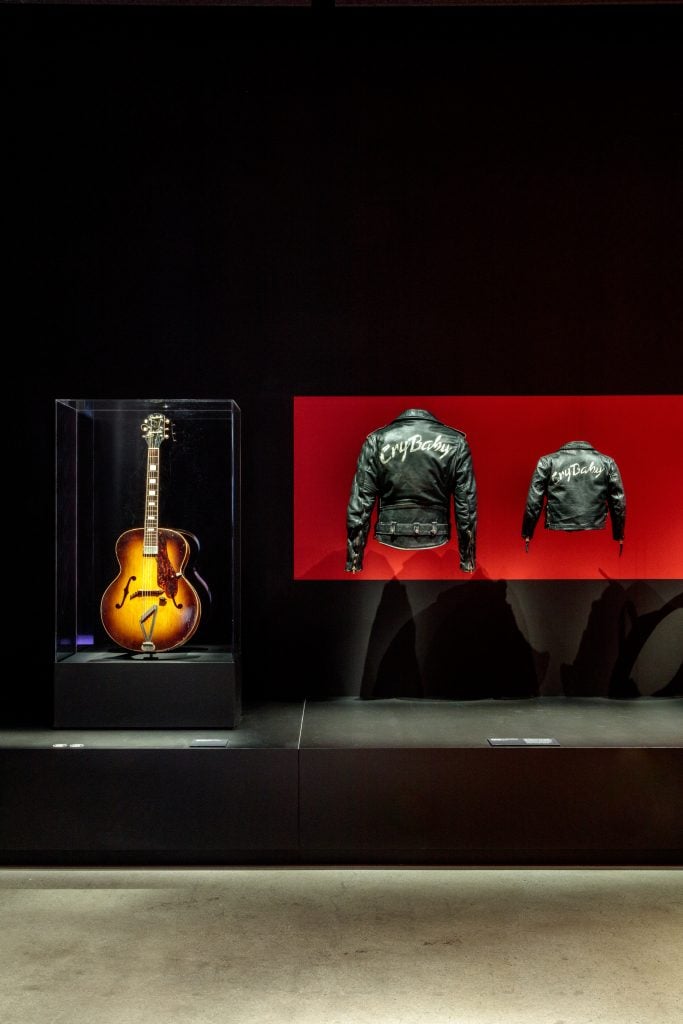
Installation view of “John Waters: Pope of Trash” at The Academy Museum of Motion Pictures, Los Angeles, California. Photo: Charles White, JWPictures/©Academy Museum Foundation.

Installation view of “John Waters: Pope of Trash” at The Academy Museum of Motion Pictures, Los Angeles, California. Photo: Charles White, JWPictures/©Academy Museum Foundation.
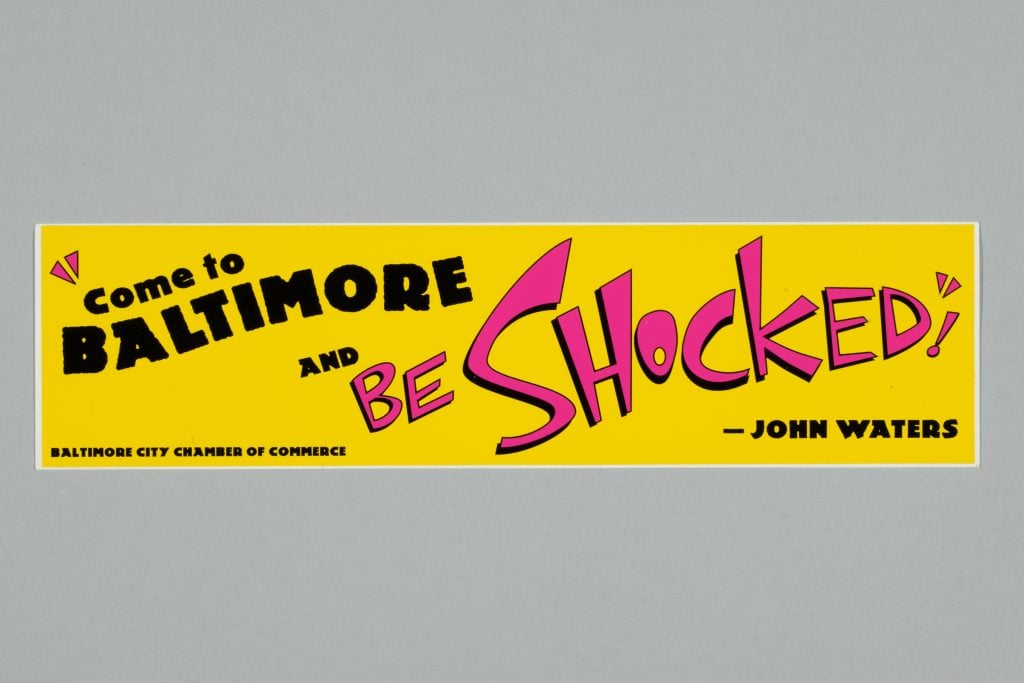
Baltimore bumper sticker. Photo: Owen Kolasinski/© Academy Museum Foundation, Courtesy John Waters.
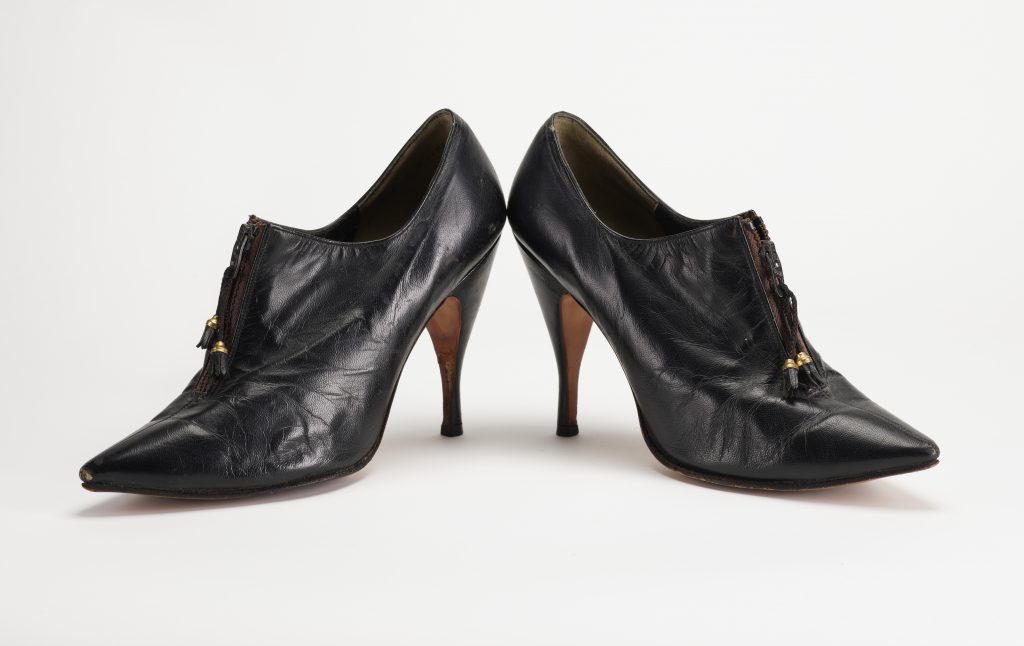
Shoes worn by Edith Massey (Frederick’s of Hollywood Zingy Zip-Ups) in Female Trouble (1974). Photo: Mitro Hood © Academy Museum Foundation.

Installation view of “John Waters: Pope of Trash” at The Academy Museum of Motion Pictures, Los Angeles, California. Photo: Charles White, JWPictures/©Academy Museum Foundation.

Installation view of “John Waters: Pope of Trash” at The Academy Museum of Motion Pictures, Los Angeles, California. Photo: Charles White, JWPictures/©Academy Museum Foundation.
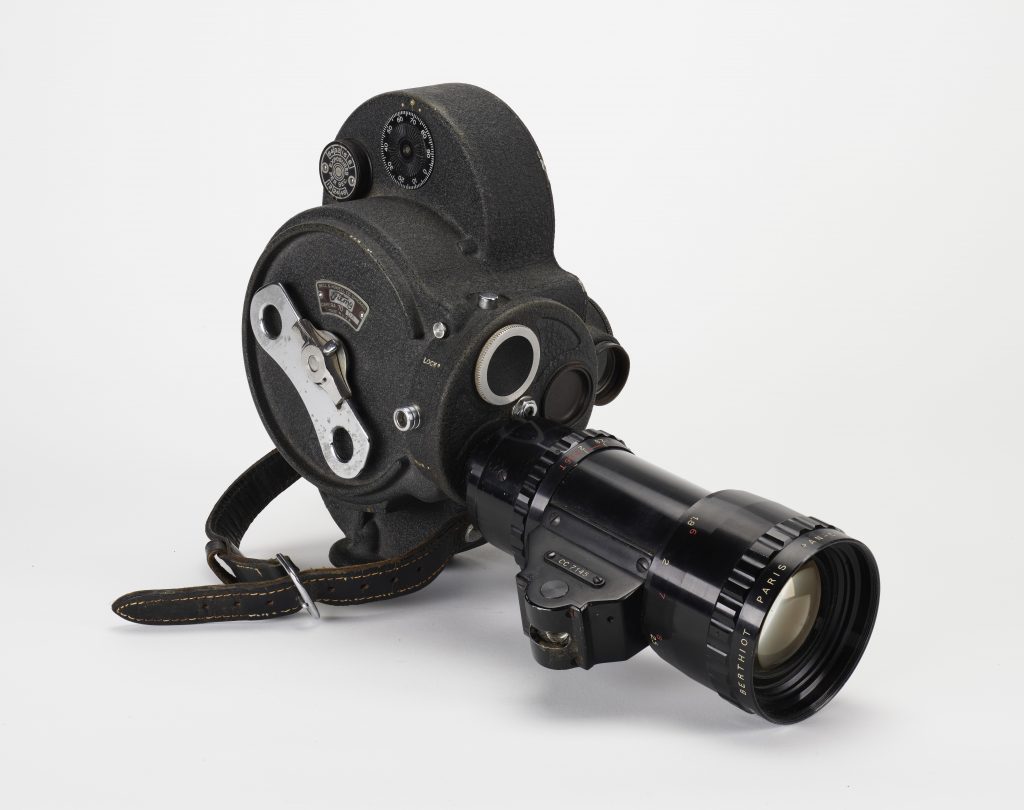
Bell and Howell Camera. Photo: Mitro Hood © Academy Museum Foundation.

John Waters at “John Waters: Pope of Trash” at The Academy Museum of Motion Pictures, Los Angeles, California. Photo: Greg Gorman, ©Academy Museum Foundation